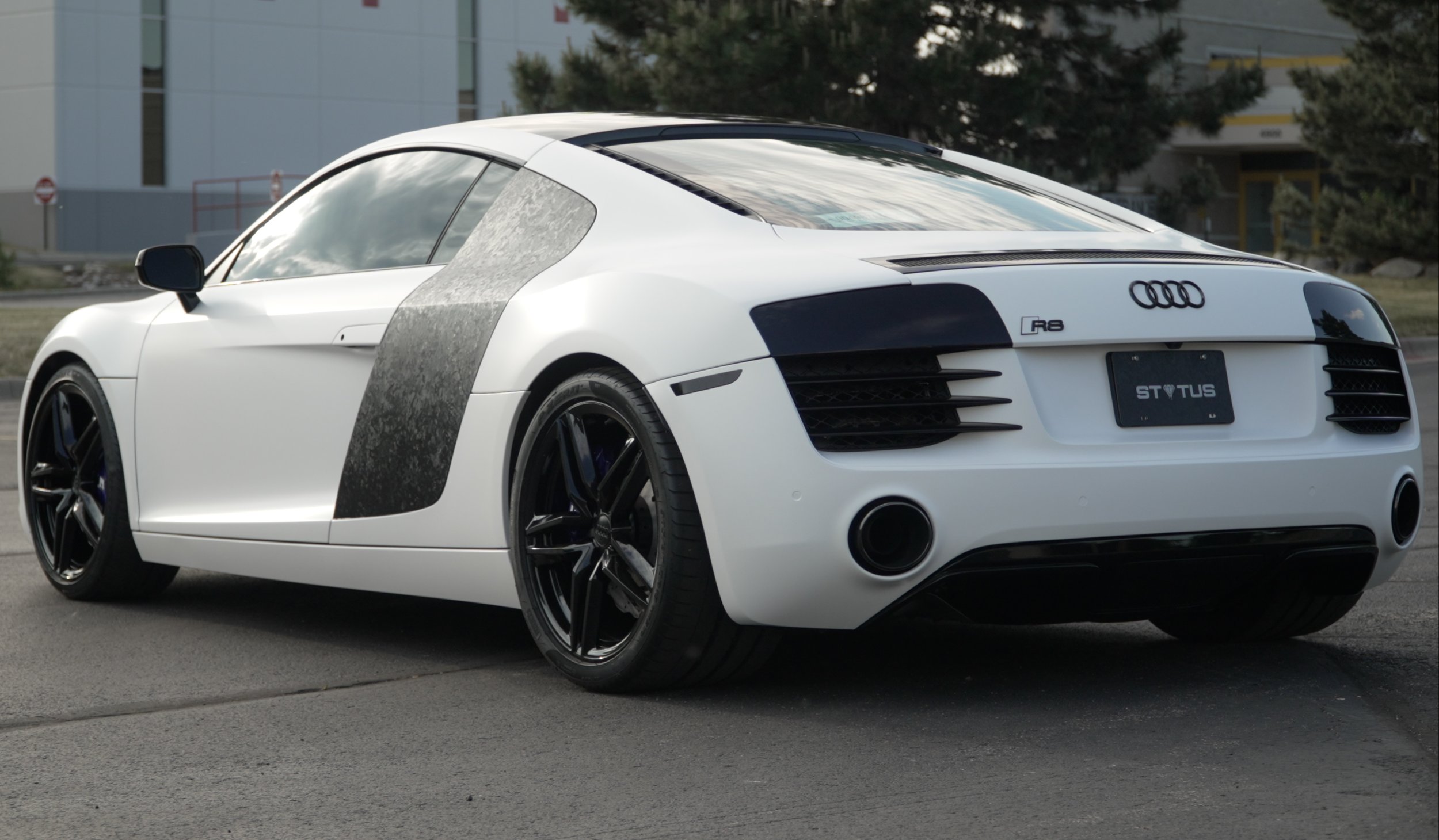With an obsession for precision and detail we take your idea from concept to cornering.
Our Services
-
Vinyl wrapping involves applying large sheets of specialized, adhesive-backed vinyl film to a vehicle’s exterior surfaces. This can be done for aesthetic reasons—such as color changes or unique designs—or as a layer of exterior protection.
Benefits
Color & Design Freedom: Vinyl allows for endless design possibilities, from solid colors to intricate patterns or branding graphics.
Protection: Wraps can help protect the original paint from minor scratches, chips, and UV rays.
Cost-Effective Customization: Compared to a full paint job, vinyl wraps are often more economical and can be removed or replaced without damaging the underlying paint.
-
Window tinting involves applying a thin, tinted film to the interior side of a vehicle’s windows. Different tint levels are available, measured by the amount of visible light transmission (VLT).
Benefits
Heat Reduction: Tinted windows help block a portion of the sun’s infrared radiation, keeping the cabin cooler.
UV Protection: Quality window films can block up to 99% of harmful UV rays.
Glare Reduction: Tints reduce glare from the sun and oncoming headlights, making driving more comfortable.
Privacy & Security: Darker tints obscure the view into the cabin, increasing privacy and deterring theft.
-
A ceramic coating is a liquid polymer that chemically bonds with a vehicle’s factory paint, creating a semi-permanent protective layer once cured. It is often composed of silica dioxide (SiO2) and sometimes titanium dioxide (TiO2) for added durability.
Benefits
Enhanced Gloss & Depth: Ceramic coatings provide a brilliant, mirror-like finish that enhances the paint’s color and depth.
Long-Term Protection: Once cured, they offer a hard, protective layer that repels water, chemicals, and helps shield against UV rays.
Easier Maintenance: The hydrophobic (water-repellent) properties reduce the adhesion of dirt, grime, and water spots, making washing simpler.
Cost Efficiency Over Time: Though more expensive initially, the durability can save on frequent detailing and waxing costs.
-
Paint Protection Film, sometimes known by brand names like XPEL or 3M Scotchgard, is a clear urethane film applied over a vehicle’s painted surfaces to protect against rock chips, scuffs, scratches, and other environmental hazards.
Benefits
Superior Protection: The film is highly resistant to scratches, impacts, and chemical stains.
Self-Healing Technology: Many modern PPFs have self-healing capabilities, allowing minor scratches to disappear with heat.
Preserves Resale Value: By protecting the original paint, PPF helps maintain a vehicle’s resale value and appearance.
Invisible Shield: High-quality films are virtually invisible and do not alter the vehicle’s color or finish.
-
Paint correction is the process of removing imperfections in a vehicle’s paint, such as swirl marks, scratches, oxidation, water spots, or holograms. This is accomplished through polishing and buffing techniques with abrasives.
Benefits
Restores Clarity & Shine: Proper correction eliminates micro-scratches and swirl marks, revealing a smooth, glossy surface.
Prepares Surface for Protection: A corrected surface is better suited for coatings or sealants, ensuring optimal bonding and longevity.
Enhanced Appearance: Removing paint imperfections revitalizes the vehicle’s overall look, often surpassing showroom condition.
-
A chrome delete involves covering or replacing the shiny chrome trim on a vehicle—such as window surrounds, grilles, badges, or handles—with a darker (often black or matte) finish. This can be done with vinyl wrap or painted solutions.
Benefits
Aesthetic Consistency: Achieves a sleek, modern, and sometimes sportier look by reducing distracting reflective surfaces.
Customizable Finish: Options range from matte black to gloss black, carbon fiber patterns, or color-matched vinyl.
Protection: Just like a vinyl wrap, chrome delete can protect underlying metal or plastic from minor damage and UV exposure.





